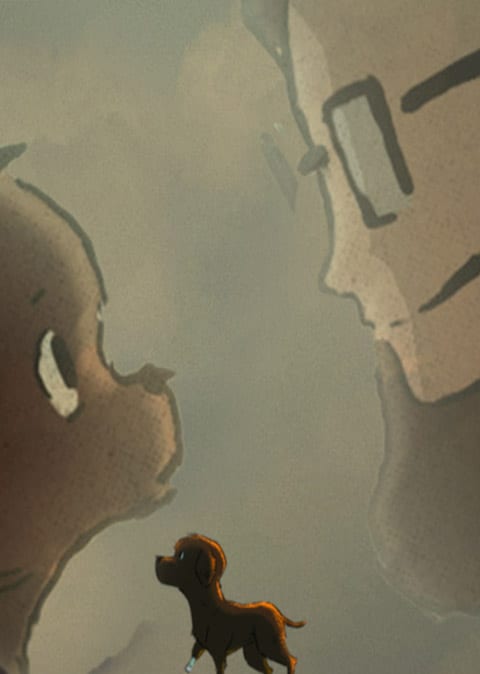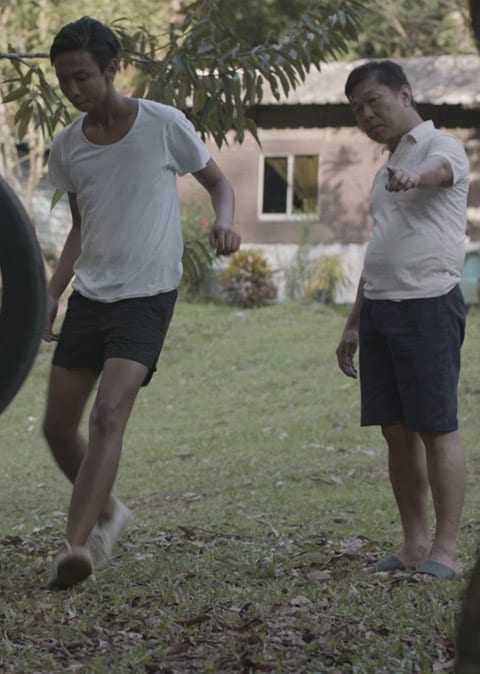Transcript
Grace Ann Chua [00:05]: A person leaving affects so many different people in a community. How can we make exits a smoother and more positive experience? Welcome to Crafting Communities, your companion to shape a better experience for the community you care about. I’m your host and friend, Grace. Today, we discuss exit activities and co-crafting exit experiences. I have Shaily and Justin with me on the podcast again.
Grace Ann Chua [00:34]: Welcome back, Shaily and Justin, for this next episode on exit. Shaily, who is affected by an exit, or when someone decides to leave an organisation?
Shaily Gupta [00:43]: There are multiple people who get impacted in any exit. Of course, the employee himself or herself. The team, if the person has teams reporting to the individual they get impacted by your resignation. The leader or the supervisor that you’re working with. And of course, the organisation because you’re delivering to multiple stakeholders in the organisation or the community. So, in any exit process, multiple people are involved, or they get impacted.
Grace Ann Chua [01:11]: That’s like everyone.
Shaily Gupta [01:13]: Absolutely. And that’s the reason designing an exit experience is very important.
Grace Ann Chua [01:18]: How should organisations begin to think about shaping or designing better exit experiences?
Shaily Gupta [01:24]: Many times, since it’s the last leg of the journey of an employee in the organisation, many organisations leave that to chance, because if you’re not going to be part of my ecosystem, then I do not want to spend my energy in designing that experience. So, they leave it to chance. And more often than not, when you leave it to chance in these processes, either the overload of operational efforts; which are required during the exit process or the hurt feelings, or the sentiments which are floating around, or the insecurities that gets creeped in, they leave a very bad taste. But even if it’s the last leg of your journey with the organisation, it is extremely important to design that very carefully, keeping all the stakeholders, all the people who are impacted in the journey very carefully, and “how do you manage those emotions?” How do you keep the process administration very comfortable and not make it very full of paperwork and signatures and very mistrusting? Have you handed over all your equipment? Have you done a good handover? Have you kind of returned all the assets of the organisation? You’ve trusted me for 10 years, you trusted me for 5 years with the most important things in the organisation. Now suddenly, when I’m resigning, you’re asking me all these questions like have I returned all the assets? I will, if I’m a good human being, I will return all. So, that’s where I personally think it’s very important to kind of design an exit process very carefully, so that you can leave a good experience for the people leaving.
Justin Mui [03:03]: Yeah, and I guess to add on to what you’ve just said, it’s really important to focus on what matters, right?
Shaily Gupta [03:06]: Yeah.
Justin Mui [03:07]: Well, it does matter that you get all your logistical equipment back but that can be done in an administrative way. But what really matters is the kind of experience and conversations that you’re giving, for the individual and for the other individuals, the other colleagues who are still in the organisation. So, I’m just curious to hear more about ideas that we can put into design such experiences, and you said not to leave it to chance?
Shaily Gupta [03:33]: That’s right. I think what happens is that you need to keep the person at the center of it and then see what are the irritants that can compromise the experience of the person, and then kind of redo your processes to make it very convenient and seamlessly flowing and not administratively very heavy paperwork or very mistrusting, and yet not compromise the organisation, protecting the organisation. What needs to be done needs to be done, but it is done in a more pleasant way.
Grace Ann Chua [04:01]: Justin, what are some principles or values that you think we can apply in designing meaningful exit experiences?
Justin Mui [04:08]: Well, I think first it’s an awareness that it’s important to design, actually the entire experience. Exit is a total experience. What I mean by that is, while our focus today is on talking about exits, but if you do something totally out of the norm, suddenly you are super engaging, but for 99% of the time, since the person joined day one, you have never really prioritized engagement, then it could possibly create an effect where the staff who’s leaving thinks that, “Okay, so now we’re just doing this for show.” So, that could be counterproductive. But once we get that out of the way, assuming that we all have good intentions, one principle I do want to share is the idea of building a positive affective experience. So, the word ‘affects’ here refers to– well, in a more layman understanding, you can understand it as emotions. And when we say there are positive and negative affects, well, there are positive or negative emotions. And when we say build a positive affective experience, we don’t mean ignore the negative, focus on the positive, pretend the negative doesn’t exist. What we do mean is to design an experience where people can be open to share about how they are going through that process of saying goodbye. Well, if you are a person who is leaving the organisation, you do mean something to people, and the relationships matter, then well, it would be quite understandable that people might feel sad that you’re leaving. So, why not create that space for these conversations to happen. In LCCS, we do design that and we call that the ‘goodbye circle’, where the person who’s leaving is surrounded by colleagues who want to be there. And they talk about that person who’s leaving, they talk with the person who’s leaving, and they share parting words. And the person who’s leaving also gets a chance to talk about his or her exit.
Shaily Gupta [06:02]: In fact, I’m just adding on to this. Let’s accept that separation or lien or exit is inevitable. There are pull factors and there are push factors. Push factors could be toxic work culture, bad boss, I’m not enjoying my work, whatever, whatever. Pull factors are that I have got something which I had never thought that I would get. It’s a compelling proposition. And I just got headhunted for it, I just got called for it. It’s like my dream come true kind of an assignment, which has come through. I think, let’s celebrate that with them. I could not provide that in my organisation, but I’m so happy for you that you found that outside the organisation, and I’m happy to celebrate that with you. So, how do you then look at minimizing the push factor, which has huge amount of organisation design and development work that you need to do to make sure that you have a good culture, you have easily accessible processes, which are not bureaucratic, which are less layered, and you’re giving people a lot of empowerment and trusting environment to work. And how do you celebrate the pull factors, that I’ve been able to create value for you while you were with my organisation, that you got a chance for the assignment that you were dreaming of.
Grace Ann Chua [07:22]: Yeah, I think it’s very important on the mindset of the leader who is receiving a resignation to even consider, “How then do I respond?” Exactly what you said, is there a push factor that can be addressed? And also to take that constructive feedback in for how we can improve the organisation for the future, for other colleagues or other team members who are still existing within the organisation, but also then to celebrate, if it’s a really strong pull factor that, within this experience we were unable to provide for.
Shaily Gupta [07:49]: That’s right. Absolutely.
Justin Mui [07:50]: Yeah. But I think isn’t that also that aspect that the person who’s leaving might come back? I heard there’s a term for it, it’s called boomerang employees. That term boomerang means the person comes back, right? And I think I really enjoyed that idea because it’s almost like saying that, you move on to a different place, you learn in a different context, you come back if you want to, and you can contribute in a bigger capacity, because you’ve had more experiences.
Grace Ann Chua [08:15]: There’s a question that’s on my mind, which is, how do you best communicate someone’s decision to leave?
Justin Mui [08:20]: Well, I think you can ask them. It’s one thing to think that you can design a process which encompasses everybody’s best choice of communicating their departure. But I think another possible way if your processes allow it is to ask them, “How would you like your departure to be communicated?”
Shaily Gupta [08:40]: Yeah, I quite like, Justin, what you said, because whether it is a voluntary exit or an involuntary exit, the individual’s respect is extremely critical. And how you protect that respect is by having a conversation in terms of “How would you want me to announce your departure?”, and giving that freedom or empowerment to the individual to create their own space or curate their own exit announcement. Of course, I think nothing is going to be like whatever the individual says, you just go in print it, right? But let that person put the first draft. You can modify, which is technically not correct, but at least a large part of the draft and the theme is curated by the individual. In fact, I remember there is a manufacturing organisation here. And one of the very senior person, she was having a very bad exit. And as an HR consultant, I was kind of helping her navigate through that tough time, her conversation with HR and with her manager as an external, not as an internal person. And then she came back and she said, “Guess what? These guys have come back and told me to write how should we be announcing your exit.” And she was seeing some design in it. She was like, “Do you think there is some design in it?” I said, “No, they are a great employer, because they want to make this exit very respectful for you.” And instead of asking them to do it for you, you must take this opportunity and write your own exit. What is the imprint that you are leaving behind because this is your opportunity to talk about what have you achieved in these 10 years? And let them say, “No we don’t agree with these achievements.” It’d be hard for them to say, but you make the first draft and give it to them. So, she and I sat down, and she drafted our entire exit process, which was then shared with HR, they tweaked it here and there. And it was very harmonious and very nice.
Grace Ann Chua [10:38]: I think there should be a good balance, though, between an organisation having a structured process versus an individual contributing their own ideas for how to communicate an exit. Because if not, there may be a discrepancy, right? And how that is also perceived to the person departing as well as the rest of the community– someone has a very elaborate exit versus someone who chooses to have a very quiet exit. I guess that there should be some amount of balance.
Shaily Gupta [11:02]: Balance between them?
Justin Mui [11:03]: Yeah, well, I guess like what Shaily was saying, it’s true that you do need to have some structure. I think that sometimes people who are leaving would appreciate that you’re asking me for my opinion, and I can shape it to a certain extent. But it doesn’t mean that the organisation doesn’t have a preexisting structure. Sometimes they might even say that, “Well, I’m okay with the usual way. I’m okay with HR sending out this email on this date.” Sometimes even informing them what is the date that HR is going to send it out. They kind of expect that they will be swamped with a lot of like, “Oh, you’re leaving? What happened?” kind of questions.
Grace Ann Chua [11:38]: And even giving the room for people to tell their closer friends or closer colleagues that, “Hey, I’m actually leaving the organisation and you’ll be seeing this email soon.” So that they’re not also caught off by surprise?
Justin Mui [11:47]: We had a colleague who actually wanted that– and in fact I appreciate, Shaily, you mentioned that this should be available for staff who are both voluntary and involuntary exiting. In fact, we had an involuntary exit and we did ask the individual what that person would have wanted, in terms of how much time, how much space that person needs. And the individual actually did request and say, “Well, could I share with my project team first?”, I want to be able to tell them personally that I’m moving on, and then the announcement can come.” And we said, “Sure.” So, I think that’s something that you can put in practice. And it communicates that sometimes it’s not always going to be that wonderful magical fit and it doesn’t do the individual or the organisation good to just force people to stay on. But sometimes it’s really helpful to then give feedback and say that, “Well, your skill sets are going to come in handy; maybe in a different role at a different organization; but we still value you as a person and we still respect you. And while you might not have that much choice over the option to stay on, you most certainly can be empowered with the choice on how you want to say goodbye.”
Shaily Gupta [13:00]: Yeah, that’s right. Actually, the only problem that I have with standardization many times is that under the cover of standardization, we tend to deny some good practices more empathetic way of exiting. Here, you’re not taking away the organisation’s decision to exit you. You’re not taking away the organisation’s processes, exit processes. What you are doing is you are asking the person and aligning yourself so that there is consistent communication. So, it’s not that the manager is saying, “Oh, I’ve asked this person to leave the organisation.” And this person is saying, “Oh, I decided to exit.” And then everybody’s like gossiping about it. I don’t know which one is true. Just because he resigns, the manager is kind of making up stories. And you know, you’re creating that bad feeling and bad energy, right? Here, you’re saying, “Guys, we’ve decided to separate apart voluntary and involuntary. Should we sit together and figure out what is the common face we have? How do we communicate to the team so that we both have the same story? That’s all. And we’re not taking away the fact that organisation has a process of communicating exit. So, you will communicate. It’s just that you’re aligning your thoughts. That’s all.
Grace Ann Chua [14:10]: Thanks for clarifying. I think in my mind, I had a misunderstanding when you were saying that because I was thinking more along the lines of, okay, the organisation sent out a standard email to announce this person’s departure versus someone writes their own like, “Bye, everyone, I’m leaving the organisation,” like that kind of difference of communicating a departure. But I get, what you’re saying is more about the kind of the messaging or the consistency and the narrative behind a departure.
Shaily Gupta [14:33]: Absolutely, absolutely. And there are different kinds of people. There are some people;” I don’t care, like, write whatever you want to write in my announcement, please go ahead.” Now, as an individual, frankly, speaking, who’s exiting, I would definitely say take charge. You know, it’s your career, it’s about something that would travel outside this organisation. But if you don’t want to, then let it be. But my advice would be that whenever you’re given this opportunity, please jump in, take charge, because it’s your career, your exit, and you need to manage that more respectfully.
Grace Ann Chua [15:04]: And even if the organisation doesn’t have that opportunity for you, I mean, for example, there are certain organisations that have very fixed process in announcing departures, you can still also do your own part to shape your own exit experience as someone leaving, right? You can organize your one-on-ones with people that you want close relationships with, and thank and appreciate. You can also do your part to send an email to the whole organisation to thank them for being part of that whole experience. There are definitely things that you can do, apart from however the organisation chooses to announce.
Shaily Gupta [15:33]: Yeah, I agree with you completely.
Justin Mui [15:34]: And I think that that is already in practice. I mean, that’s very natural, right, that people would want to arrange their own engagements and all that. But I guess from the organisational point of view, if that’s going to happen anyway, why not jump on the bandwagon and go with that process? Because the more you are resistant towards designing these goodbye experiences, the more it’s going to send a different message to the people who remain, the more it’s going to send a possibly even a negative message to the person who is leaving. We’ve heard about that in the previous episode. So, why not just do it by design?
Shaily Gupta [16:11]: Totally.
Grace Ann Chua [16:12]: Thanks, Justin and Shaily, for having this whole conversation about ends and exiting. And so, as we move to the end of this episode, I have one last question, which is, what would be one piece of practical advice that you would like to give to our listeners who are tuning in today, as they’re thinking about exit processes for their members, something that they can apply first thing tomorrow morning?
Shaily Gupta [16:32]: I think I would just say that do not leave things to chance, focus on every touchpoint and create a delight. Exit is inevitable, so see it as an important part of the employee lifecycle in your community or in your organisation, such as design it carefully, design it respectfully, and make it somewhere somebody walks out feeling being connected with the organisation and feeling respected with the organisation than just feeling being thrown out of the organisation.
Grace Ann Chua [17:03]: Valued and appreciated.
Shaily Gupta [17:04]: Valued and appreciated, absolutely.
Justin Mui [17:06]: Yeah. And just to elaborate on that, also, I’m on the same page, I think that you can design rituals. I use the word ritual and the word routine, because routine just means that you’re just doing it without even thinking or it could be very token, but ritual meaning that you design this experience to say goodbye in a certain way that’s unique to your organisation, because there is a certain value that you want to inculcate in saying that goodbye. It just needs to be something that people need to understand the why behind that activity. Because unless you know your why, your what and the how actually remains more of the same. I guess start thinking about why you want to do goodbyes in a more intentional way.
Shaily Gupta [17:49]: I love it when you say routine versus rituals. Fantastic. Have your rituals. Lovely.
Grace Ann Chua [17:55]: Thanks so much, Shaily and Justin.
Shaily Gupta [17:57]: Thank you.
Justin Mui [17:58]: Thank you.
Grace Ann Chua [17:59]: That’s all the time we have with us for today’s episode! Join us next week as Justin tells us more about Goodbye Circles, a practice he conducts at Lutheran Community Care Services for individuals leaving the organisation. See you next week!





















